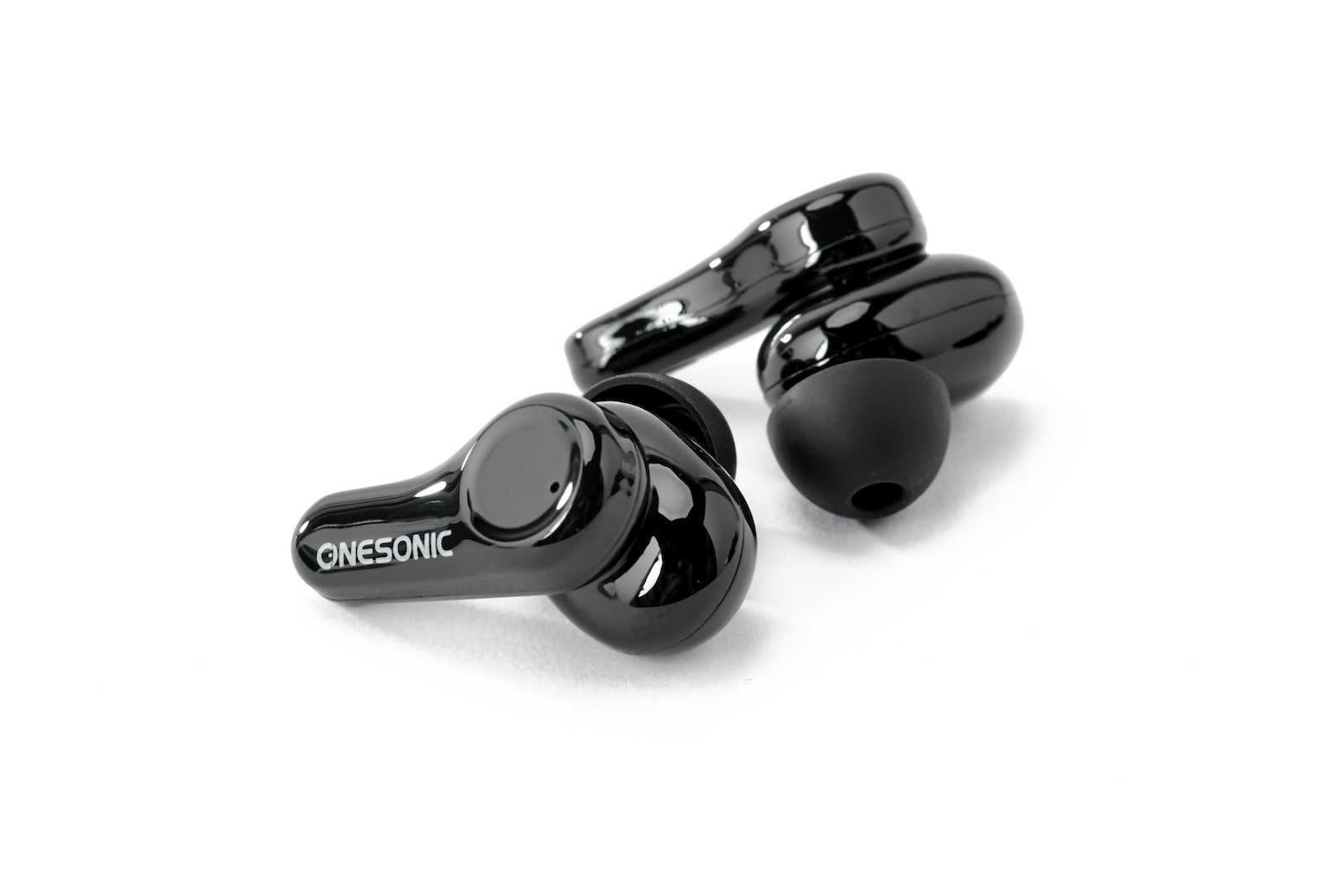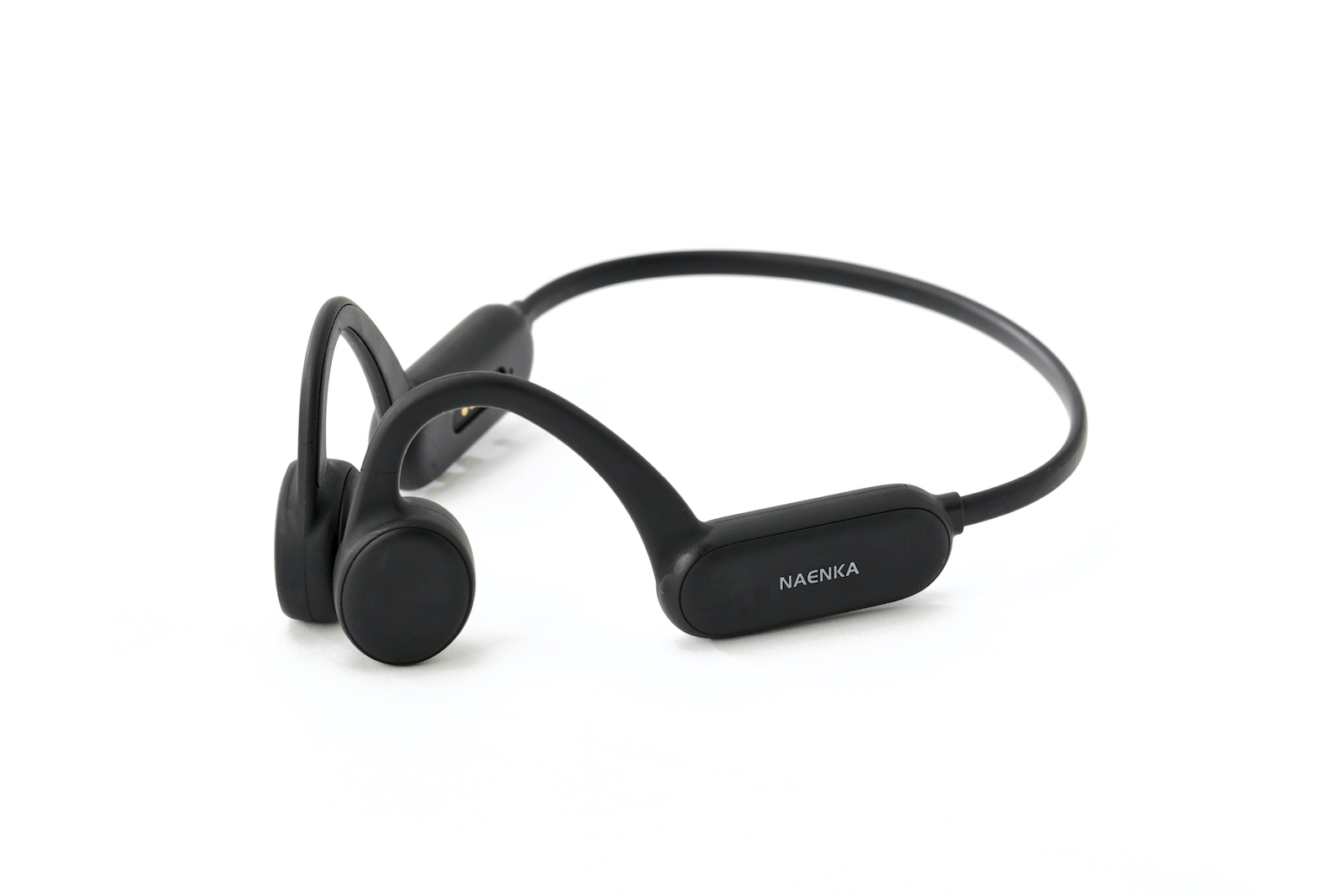Best running earphones to motivate and soundtrack your runs in 2025
Running to music is proven to offer a range of benefits to your training. Here, Rob Slade and Kate Milsom put seven sets of running earphones to the test

Various studies have proven the benefits of running to music over the years. Findings show doing so can help with your pacing, make exercise feel easier and reduce mental fatigue. But picking the right pair of running earphones is important.
When running, you need headphones that’ll stay put, feel comfortable and deliver a good enough sound that you can hear and appreciate your music over other noises.
That said, it’s also vital for safety that you can still hear other sounds over the music, such as approaching cars, cyclists or other hazards.
Incidentally, you’ll want to steer clear of run earphones that only offer music in a noise-cancellation mode.
The best running rarphones also need to be resistant to weather and sweat, connect to your phone easily, fit well and offer sufficient charge to get you through your sessions.
With all this in mind, we’ve put seven pairs of run earphones through their paces to see which hit the right notes.
While some running earphones are waterproof, you’ll probably want a pair of the best swimming headphones for pool and open-warer swims.
Best running headphones
Shokz OpenRun

220 Triathlon verdict
Benchmark running earphones; pretty much flawless. Score: 95%
Pros
- Very light
- Great battery life
- Minimal viibration
- Sound quality and awareness combined
Cons
- Nothing really
- £130 / $129.95
The Shokz OpenRun set the gold standard for running earphones. Nothing matches their comfort, low weight, battery life and value, not to mention their balance of sound quality and situational awareness.
To boot, these bone conduction earphones now have a quick-charge function, which delivers 90 minutes of battery life in 10 minutes of charging.
Although they withstand rain and sweat, the OpenRun are not waterproof enough for swimming.
Shokz OpenFit Air

220 Triathlon Verdict
Better sound and comfort out there, but the OpenFit Airs balance key aspects well to make them great running headphones. Score: 80%
Pros
- Secure fit
- Pretty comfortable
- Reasonable price
Cons
- Hard to hear surrounding sounds
- Can’t match the OpenRun comfort
- £119 / $119.95
Unlike many of the headphones in the Shokz range, the OpenFit Air are individual devices that sit on each ear, rather than units connected by a band around the back of the head.
They also use the brand’s DirectPitch tech rather than bone conduction, which fires the music into your ear canal.
This model follows the launch of the standard OpenFits, which I reviewed in 2023. The latter retails at £179.99, while the Air has an RRP of £119.
That’s a big saving, yet the duo are rather similar. They both come with a case, which charges the earphones when they’re stored inside. That gives you up to 28 hours of playback for both headphones.

The standard OpenFits give you up to seven hours on a single charge, while the Airs are just six. Still, that’s not a huge difference. Charging time is the same (60mins to charge the earbuds to full and 120mins to charge the case to full).
Comfort is pretty high and is on par with the pricier OpenFits, though I do find the OpenRun range more comfortable, as after several hours you can start to feel a bit of fatigue on top of the ear with these.
They fit securely and I’ve never had any issues with movement when running or moving about. Situational awareness is also decent, though not as good as you get with bone conduction headphones.
Sound quality is pretty good, though it’ll never compete with in-ear alternatives. What’s not so good is the fiddly touch-sensitive controls, though I’ve never been bothered by having this as a feature.
Ultimately, I’d pick these over the original OpenFits due to the price difference, but I still prefer using my OpenRun Pros – you just don’t get a charging case with them! RS
OpenRock X Earbuds

220 Triathlon verdict
Expensive and not the most comfortable, but decent enough performance and impressive battery life. Score: 75%
Pros
- Long run time
- Good audio
Cons
- Lacking comfort
- Could let through more ambient sound
- £169.99 / $169.99
The OpenRock X Earbuds have a couple of things going for them. First, they boast a battery life of up to 12 hours on a single charge or up to 48 hours when intermittently stored in the case.
While I haven’t had a stopwatch going for the last couple of months of use, I think I’ve only had to charge them once, and I listen to music a lot. So that’s a tick for battery life. The earbuds also pivot at two points to help you get a comfortable and secure fit.
The latter was achieved, but I did experience some discomfort when listening for extended periods, and if I tweaked the pivots the earbuds felt less secure.
Situational awareness is okay, but not as good as some competitors, while sound quality is also mostly decent, but I did find it tinny at times.
The carry case is also a little bulkier than you get with Shokz, for example. RS
JLab Epic Air Sport

220 Triathlon verdict
Brilliant battery, impressive sound and top value. Score: 92%
Pros
- Long run time
- Rich sound
- Affordable
Cons
- Tap function doesn’t work smoothly
- £69.99 / $99
These great-value earphones are lightweight (21g per pair), sweatproof and stay put throughout sessions. They also come with six different earbud tips, allowing you to choose a shape that’ll suit your ears best. There are three noise cancellation modes, including on, off and ‘be aware’, which allows external noises in, and all three modes work as intended.
The earphones also come with three pre-set sound settings and one customisable setting, which allows you to adjust levels in the app. These work well and we were impressed with the sound quality on the pre-set modes, with strong bass and good clarity.
You can also control the music and settings by tapping the earphones themselves, with different combinations achieving different functions. They can be frustrating at times, but vitally you can customise these (or turn them off) using the app. Battery life’s a claimed 15hrs, while the charging case is said to provide an additional 55hrs.
Onesonic MXS-HD1
Buy now from Amazon (£119.99)

220 Triathlon verdict
Compact and useful, but audio and safety not at the same level as others on test. Score: 80%
Pros
- Slimline
- Decent battery life
Cons
- Not waterproof
- Middlying sound quality
- Could be dangerous in town
- £119.99 / $151
Compact is the word for these earbuds. From the slim case to the slender buds, the Onesonics are super portable and light. They connect to your phone without fuss and, like the Bose, claim a playing time of up to 5hrs, with a further 20hrs of portable charging available from the case.
Audio quality is decent, but not with quite the same depth and range as the best running earphones. They’re also only splash resistant, so we wouldn’t reach for these in a heavy downpour. In terms of safety, they’re noise cancelling with ‘environmental noise suppression’, which can be hazardous as you can’t hear approaching cars when outside.
Though there’s an ‘ambient sound mode’, we find this doesn’t make much difference. These buds come with three silicon tip sizes to choose from, which we find fit securely in our ears. With just a double or single tap, play/pause and volume can be controlled on the go.
Naenka Runner Pro

220 Triathlon verdict
Waterproof and good memory but poor battery and sound. Score: 78%
Pros
- Lots of storage
- Waterproof
Cons
- Low volume
- Meagre run time
- $79.99
The Naenka Runner Pro are comfortable, light and fit well, hanging over the ears with the band at the back hanging down onto the neck. They use bone-conduction technology, which means you’ll always be able to hear ambient noise around you.
However, we felt the maximum volume just didn’t go high enough, particularly in noisier surroundings. Sound quality is reasonable, with a good balance to the music, but the bass lacked depth and vocals weren’t as clear as they could be.
Battery life also isn’t the best with a claimed 6hrs at 65% volume (which is pretty quiet). Meanwhile, the charging cable is fiddly and the connection is weak, which can get annoying.
Redeeming features include a waterproof construction, easy connection and an 8GB memory, allowing you to load your music onto the earphones and run without a phone.
Since we tested the Runner Pro, Naenka has released the Runner Pro 2, claiming to have improved waterproofing.
Creative Outlier Free Pro

220 Triathlon verdict
Nice for general use, but they have a few limitations; also pricey. Score: 67%
Pros
- Music storage
- Bone conduction
Cons
- Average waterproof rating
- Sound is disappointing
- £120 / $129.99
The Creative Outlier Free Pro are wireless, bone-conduction headphones which you can wear in the pool for 40 minutes at a time.
Their long list of features includes a microphone for hands-free phone calls and 8GB of music storage.
Sound quality could be better though and their waterproof rating isn’t the highest. You’ll also have to remember to cover the mic when swimming. HW
How we tested
Three of our expert testers have contributed to these running earphones reviews using similar methods.
On short and long runs alike, they’ve evaluated fit, comfort and battery life. They weighed up how good the music or audio sounds versus how well the earphones keep you aware of your surroundings.
As ever, our testers assessed value for money by comparing price to performance and the availability of features and extras, like charging cases.
What to look for in running earphones?
In comparison to everyday earphones, running earphones have a trickier job. Here’s what you should consider when shopping for your next pair.
Design
Running earphones can be in-ear, where the ear bud sits in your ear, or bone conduction. The latter design, where the ear plug hooks around your ear without going inside, is considered to be the safest. You can still hear the music but it doesn’t block out ambient noise, letting you hear potential hazards on the streets and trails. The downside is that sound quality is inferior to in-ear versions.
Comfort
Look out for lightweight, soft silicone running earphones because these are likely to be comfortable over longer runs.
Fit
Especially when you’re running off-road and faster on tarmac, running earphones need to fit really securely.
Waterproof
Even if you just run in your earphones, you’ll want a decent waterproof rating to prevent them getting damaged by rain and sweat.
Connectivity
Wireless earphones, equipped with Bluetooth to connect to your phone, are universal now. These do away the hassle of cables, which most modern phones don’t support anyway.
Storage
More expensive running earphones will be able to store music uploaded from your track library. This can be handy if you want to save mobile battery or don’t have internet reception.
Battery life
The best running earphones will last you several runs and potentially a whole week’s training: six to eight hours is a typical run time.
A charging case, which you can charge your earphones in between mains charges, are a nice extra.






